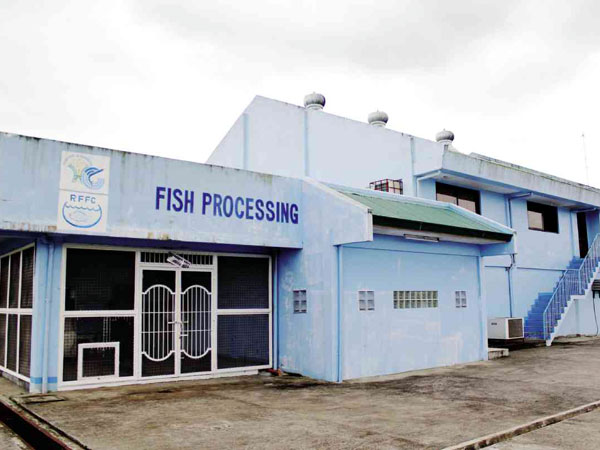
FAÇADE of the Regional Fisheries Freshwater Center in Bula, Camarines Sur. The center provides technical help to would-be investors, from creation of recipes for canned fish to production.
BULA, Camarines Sur—The Bureau of Fisheries and Aquatic Resources (BFAR) in Bicol said a P30-million packing facility it has been operating since 2011 would help boost the canning industry in the region which yearly produces more than 200 metric tons of good quality canned fish.
Miguel B. Bañez, project development officer of BFAR’s post-harvest unit at the Regional Fisheries Freshwater Center (RFFC), said they would provide technical help to would-be investors, from creation of recipes for canned fish to production and to packaging.
He said investors venturing in fish canning, who have at least P4.5 million in capital, could expect P1.5 million in profit in a month if they tap the canning plant’s services here.
Reasonable fees
THE SITE of the Regional Fisheries Freshwater Center in Bula, Camarines Sur.
Bañez said BFAR would only charge the investors to pay for manpower and cost of raw materials.
An employee of a company known for canned fish before working for BFAR, Bañez is involved in the plant’s design, fabrication of pieces of equipment and actual fish processing and canning.
He said that once an investor agrees with the BFAR recipe, production could start.
Bañez said the plant’s full capacity to process and pack fish materials is five tons per day.
Combining manual and mechanical means, the plant’s full operation requires 36 workers.
Fish canning starts with the cleaning, cutting then brining of the fish. These are put into cans manually and placed on steel conveyors that run on a steam chamber for precooking. The cans continue down the conveyor where steam is discharged before it passes through a machine that fills them with sauce.
Eco-friendly
Bañez said the plant’s design and processes are eco-friendly with waste from fish, like gills, stomachs, heads and scales, converted to feeds for tilapia and other fish.
There is a treatment plant for used water before it is discharged into the tilapia ponds of RFFC which also operates a hatchery in the 15-hectare complex.
PHOTOS BY JUAN ESCANDOR JR./INQUIRER SOUTHERN LUZON